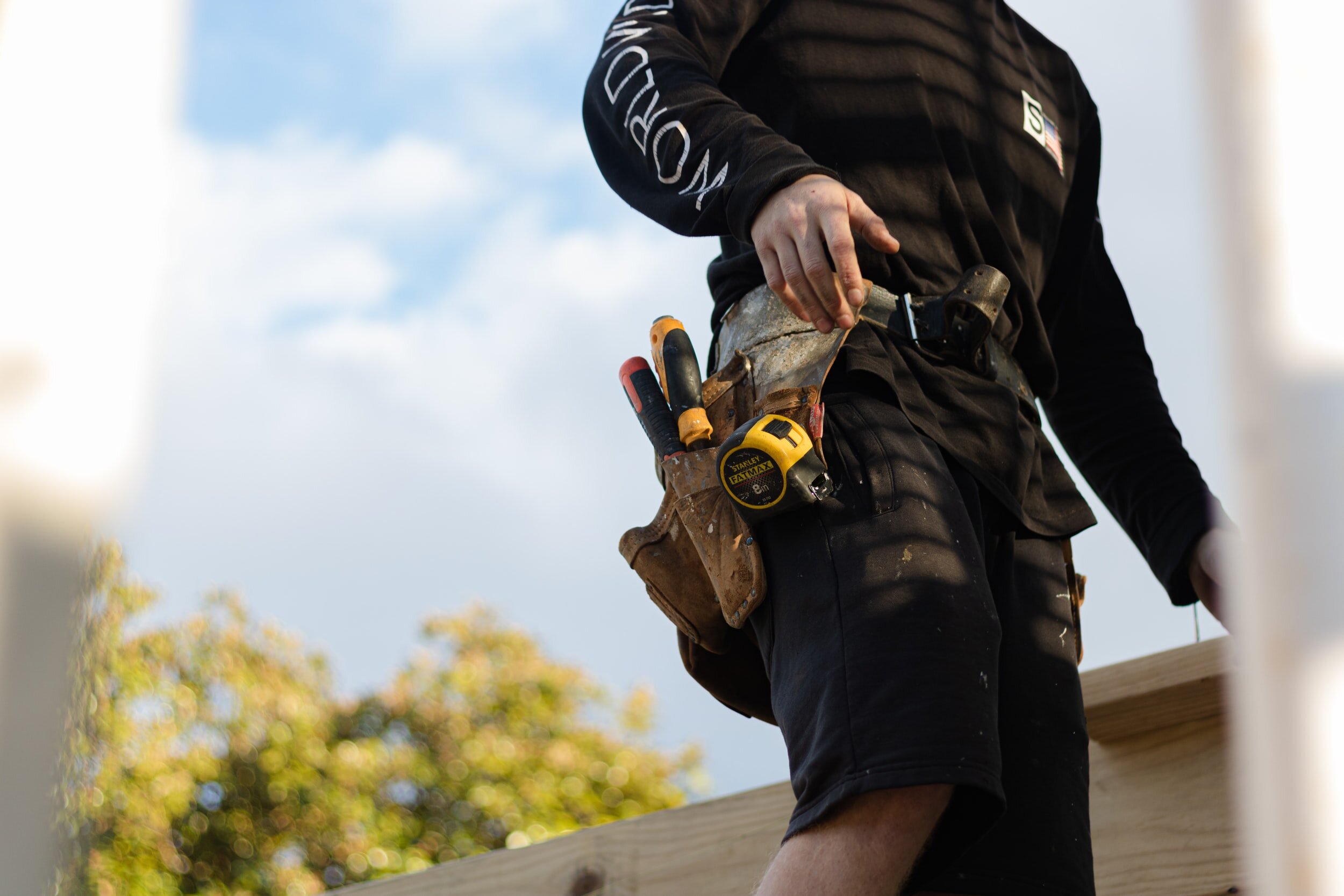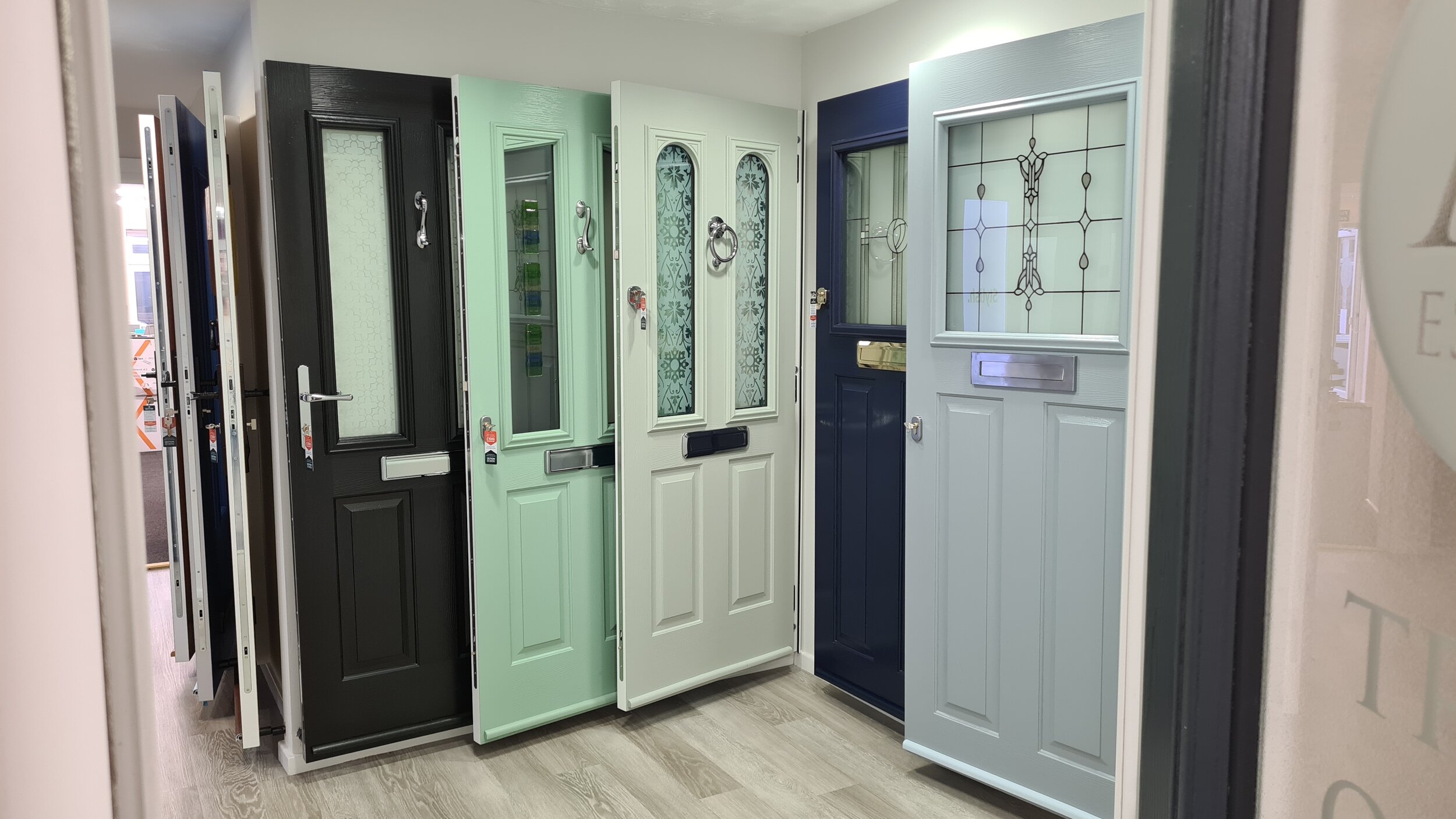
MEASURING UP AND FITTING
Detailed instructions for measuring up and installing residential windows
The following instructions are relevant for uPVC windows, front and back doors, and French doors.
How to measure a window
The most important step in the window replacement process happens long before the installation itself. Before any existing window is replaced, you need to measure the dimensions of the existing product correctly to ensure that the replacement window is the right size for the task at hand. To do this you will need to determine the following measurements:
Inside width of the frame (take the smallest measurement)
Height of the frame (take the smallest measurement)
Gradient of the cill
Squareness of the frame (measure from corner to corner)
This will provide you with all of the measurements and specifications you need to order a replacement window, helping you to avoid disappointment later on during the installation.
Installing a window
Before removing the existing window or door, measure the opening and check-measure the new product. There is no point in removing the old door or window if the new one will not fit for whatever reason!
Begin fixing the frame by positioning the cill profile onto the brickwork, such that the ‘up stand’ is snug against the plaster line of the jambs (it may be necessary to trim the ‘horns’ to fit around the brickwork).
Using plastic packers, level the cill with approximately 5mm clearance between it and the brickwork (this is the standard clearance required around all sides of the frame). Run a bead of silicone along the back of the cill ‘up stand’ and down the sides to ensure the frame can drain correctly. Where there are supplementary profiles, frame extender, ‘I’ section, or bay-poles for example, it is important to silicone along the length of the section to guard against water ingress.
Open the vents of the window to enable access to the outer frame jambs and, with the base snug against the cill ‘up stand’, ensure a tight seal into the bead of silicone, cleaning off any excess as you go.
Fix the bottom of the window into the brickwork using 5mm x 50/60 Pozidriv screws. Begin at 150mm from each internal corner, and fix at roughly 600mm intervals thereafter.
Remove all of the window’s internal tape and glazing beads, marking them so they can be replaced later in their original position.
Offer the new window into position. With spirit level, ensure the new window is positioned vertically and where appropriate hard up against the plaster line. As a side note, not all plaster lines are level; it is important to get the frame vertical, or even to lean out fractionally at the top for better drainage than to follow the plaster line.
Wedge the window into position using plastic packers. Do not bend the framework by over or under packing – this will seriously affect the product performance and will invalidate the guarantee!
Close and lock all opening sashes, and check for squareness within the outer frame. This is essential – windows fitted out of square will not be guaranteed.
By through frame fixing or reveal bracket fixing, secure the window jambs and window bottom into the brickwork surround. Use 10 x 100 mm fixing bolts 150 mm from each corner and spaced at 600 mm intervals thereafter. In all cases, ensure that the screw heads are not standing proud as this may interfere with the glass positioning. Check for level and do not overtighten the fixing bolts.
Installing a window unit’s glazing
Prior to locating the sealed glass units into the aperture, position the glazing packers into the frame recess. A dab of silicone or mastic will secure the packer in place in preparation for glazing and to safeguard against future movement. A bridge packer (black) must always be used as the bottom packer to ensure unrestricted drainage.
All side hung sashes require toe & heeling – please read our toe and heeling guide.
For security reasons, ensure the packers are positioned at any locking points, as well as the opposite side. This prevents the frame moving away from the locking points if levered in an attempted break-in.
Make sure the gaskets are well lubricated with soapy water or glass cleaner before offering the glazed unit up the frame. Rest the unit squarely upon the glazing packers, ensuring the glass is central within the opening. Push the glass back into the rebate as far as it will go without using undue pressure.
Gently unlock and open the sashes to test smooth operation, watching for any movement between the glass and frame. Minor glass packers may be necessary to achieve perfect squareness to all sashes. Lateral movement can also be obtained by adjusting the hinges – take a look at our toe and heeling guide for more info.
At this point, clip the glazing beads back into their original position, putting the shortest in first. For small frames where all the beads are short, it may be necessary to carefully score the back of the bead ensuring not to cut the neoprene gasket. This will give the bead further flexibility. For longer beads to join at the miter, knock the bead into position and push into the corner to maintain a tight fit.
Carefully gun a bead of silicone between the outside masonry and window frame periphery, wiping off any excess. Don’t forget to silicone under the cill! Similarly, gun a thin bead of acrylic between the inside plaster and window from the periphery. The best results can be achieved by using masking tape.
Using super glue, secure the end caps into position. They may need trimming to size if the cill horns have been cut around the brickwork.
Remove all protective tape immediately from the faces of the window frame; the longer it is left on the more difficult it is to remove. Clean where necessary with warm soapy water.

